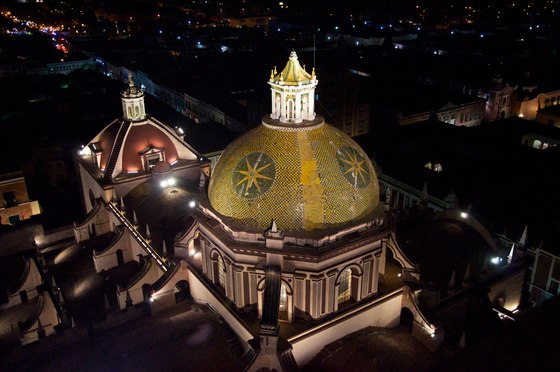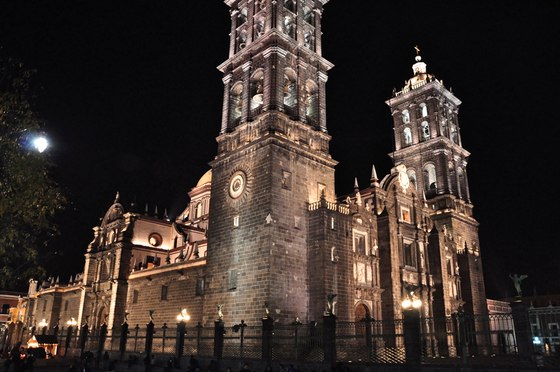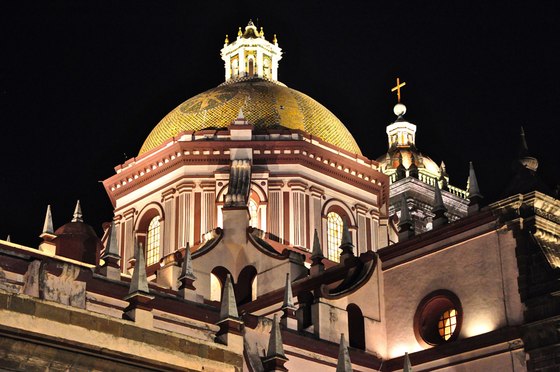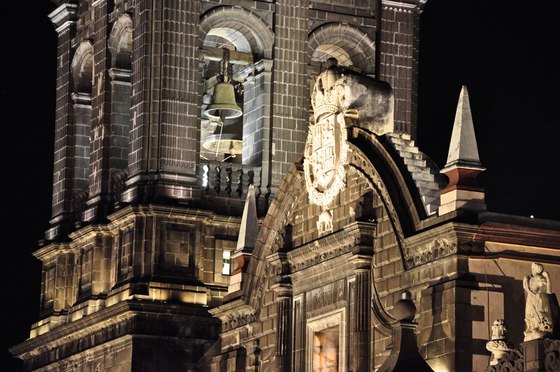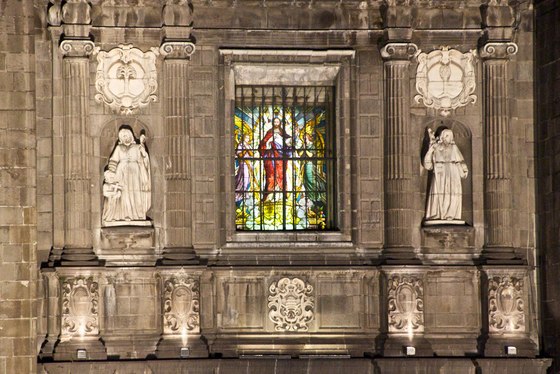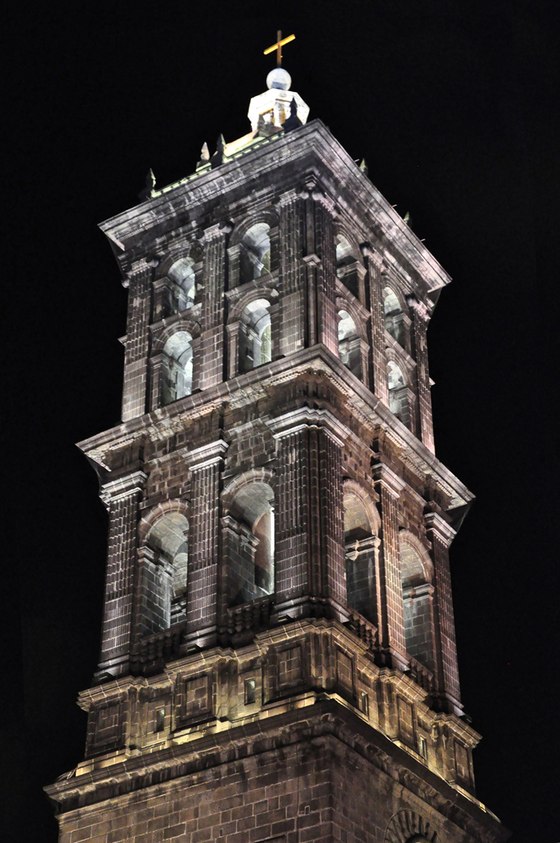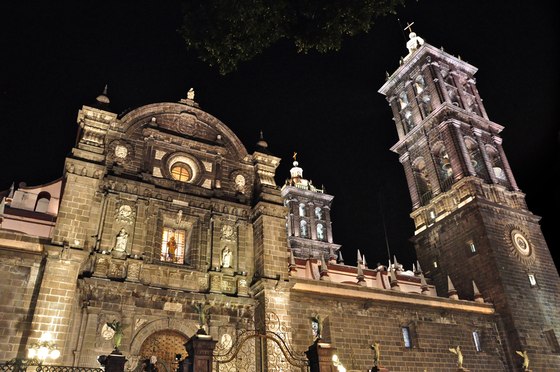Designed by Francisco de Becerra, Puebla’s Cathedral is dedicated to Maria Immaculate. The city is the capital of the state of Puebla and one of the five most important colonial cities in Mexico. Due to its history and architectural styles ranging from Renaissance to Mexican Baroque, the city was named a World Heritage Site in 1987.
The lighting concept is respectful of the complexity and the detailing of the Cathedral, enhancing the perception of each element according to their original and specific importance. The intertwining of light and shadow in each level becomes the lighting scene by itself.
The main cupola, the greatest one, is covered with a very special yellow talavera tiling. It stands out in the skyline, as the most significant and majestic element in the city centre. Here, three spotlights (medium aperture) were used. Those G.E. M.H. are now located in both bell towers, in order to achieve a diagonal 120 meters draw for the profile of the cupola itself.
The dome lantern is crowned with the light of three spotlights (8° aperture each), located in the rooftop of the central nave. And its stained glass windows pour full of light provided by six different floodlights located in the inner cornice of the cathedral running from side to side.
The main façade, with its classical symmetry, is framed into its twin bell towers, giving the impression of protection. The composition of this facade continues into three successive fronts, with symbolic, mystic and religious themes. In the lighting project, a very specific light (color, temperature, etc.) belongs to each different theme, also depending on the importance of the elements onto the whole composition.
A series of Light draws from the spotlights located in the fences and poles of the Atrium (are combined to create very specific affects. A PAR GE 38 4200°K lamp is focused right into a stain
glass window; lighting the Cathedral to its inside, while at the same time, achieving the effect of light coming out from the church itself.
While the moon defines the nightsky, a white light pours from the interior, as a recall for everybody of the existence of God. The bell towers are lighted first through draws coming from spotlights located in neighboring buildings; but also through a series of floodlights located each one in every level of the towers. The towers are crowned by 200 meters distant draws by RGB spotlights, programmed to commemorate each important date in the catholic schedule.
Belonging to the visual composition of the Cathedral, the lighting concept of the south front was finally realized through new design poles, each one supporting five different projectors, with a specific aperture each one. In this way, volume, texture and color of the stone are enhanced.
